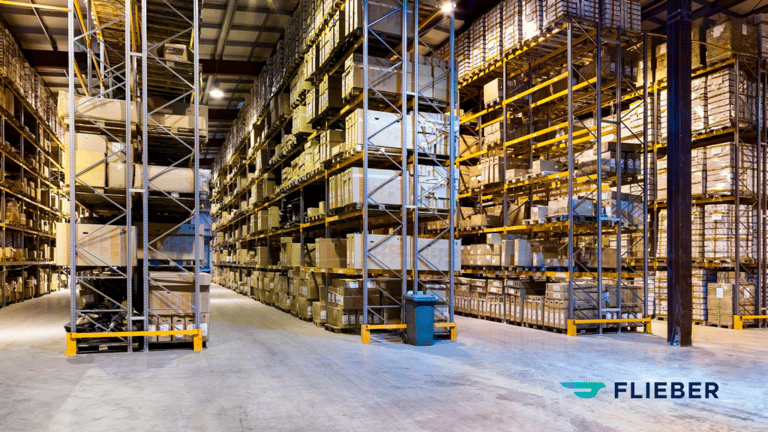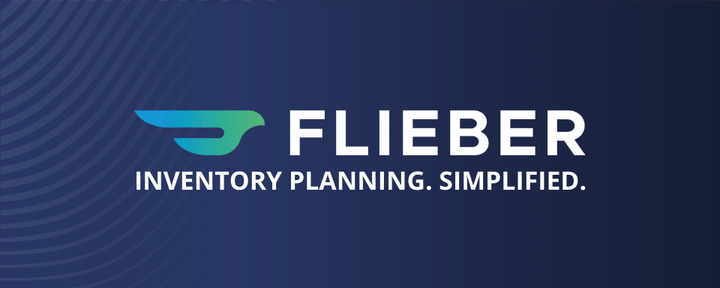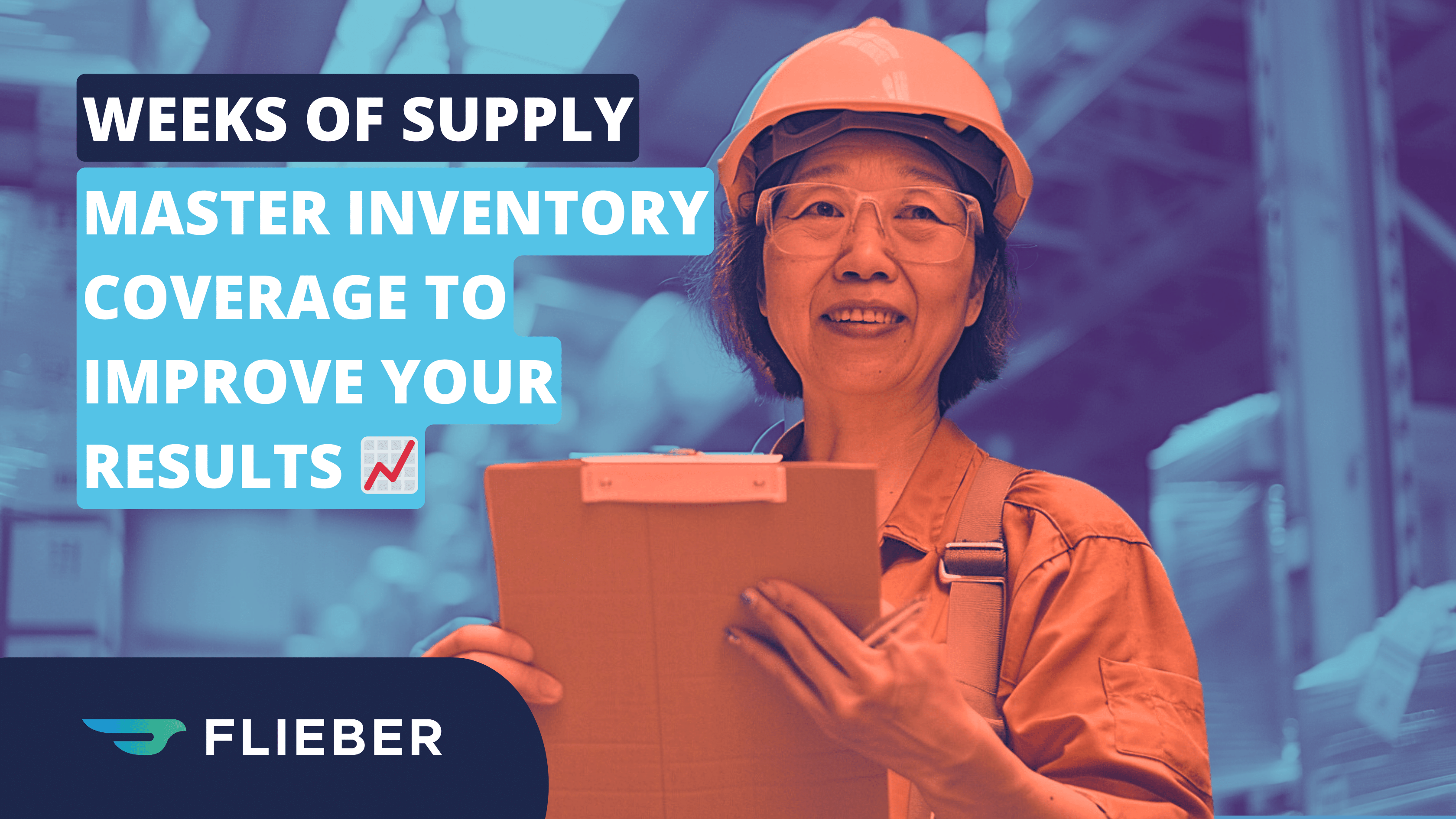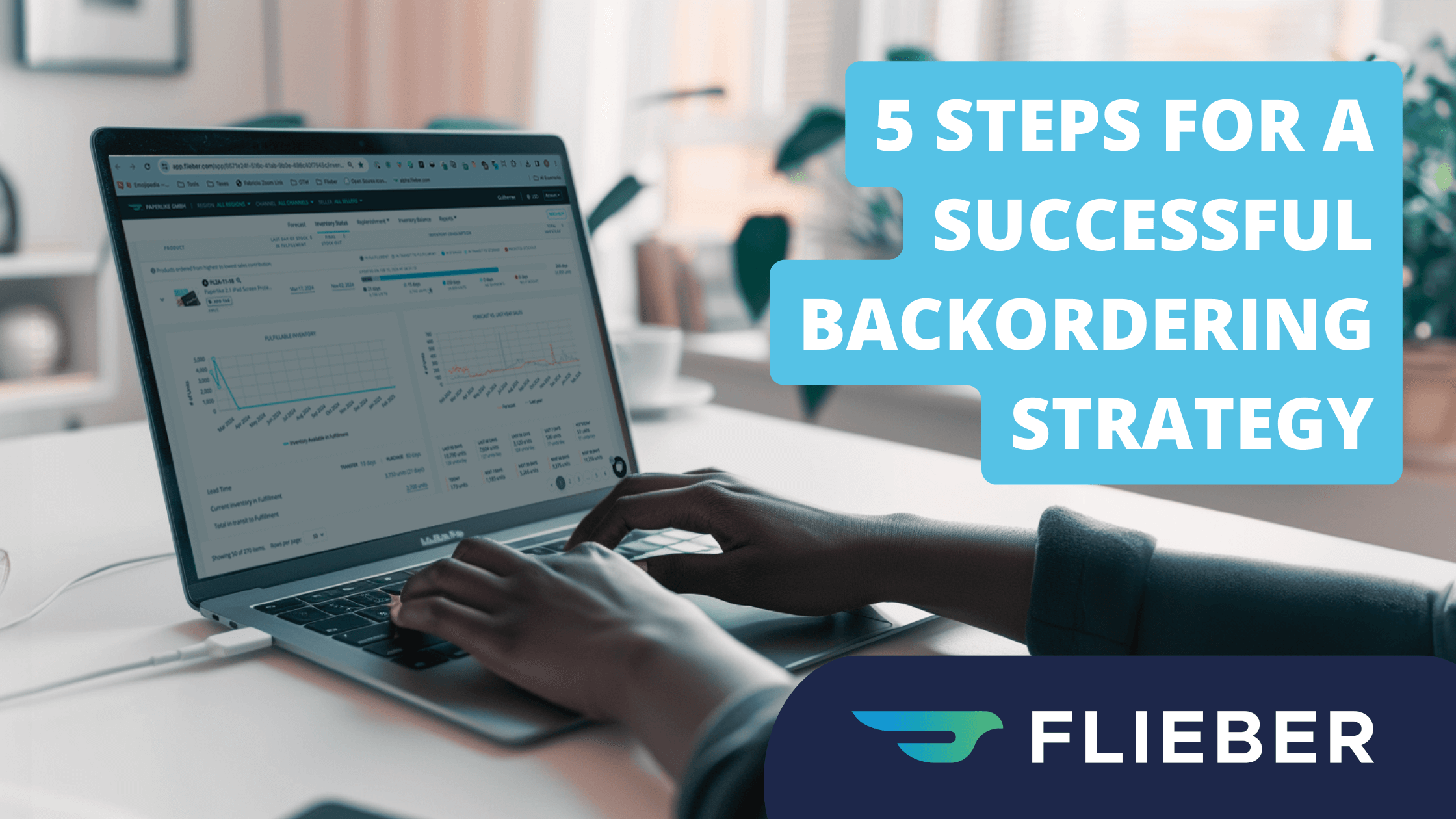You’ve made it! You’re crushing it in Amazon FBA and are making running an e-commerce store look like a walk in the park. But here’s the thing. You know there’s more out there, and you’re determined to step up your game to get it.
So, what’s next? Multi-channel selling.
Channel loyalty is rapidly fizzling away as more consumers expand their shopping horizons. In fact, 73% of shoppers use more than one channel during their customer journey, and almost 65% of buyers don’t mind purchasing from a third-party seller they’ve never heard of before.
If you want to profit from this growing trend, now’s your chance.
But how do you set up an ecommerce inventory optimization system that drives multi-channel sales, when all of a sudden you’re juggling multiple inventory locations and 3PLs instead of relying just on Amazon FBA?
In this guide, we’ll show you how to take control of your multi-channel and Amazon inventory to increase your customer base and boost sales, without overcomplicating your supply chain.
Let’s get into it.
Want to take control of your sales? Click here and find out how the right inventory management solution can help.

Multi-channel Inventory Management: What We’ll Cover
- Part 1: Go Big or Go Home: The Benefits of Expanding Your Ecommerce Business.
- Multi-Channel Selling with Amazon MCF: What’s the Catch?
- Part 2: Handle Your Multi-Channel and Amazon Inventory Like a Supply Chain Management Pro.
- Why Multi-channel Inventory Management Holds the Key to Your Success in Ecommerce.
Part 1: Go Big or Go Home: The Benefits of Expanding Your Ecommerce Business
In a business where issues like shipping cost hikes, strikes, and natural disasters can slam the brakes on your progress, you can’t afford to rely on just one sales channel.
The good news is, the panic these problems bring will instantly shrink when you know you have other income streams to rely on while you put out the fire (and there will be fires).
But it can still be intimidating to step into the unknown.
To give you a friendly nudge, here are a few reasons why going multi-channel is no longer optional but essential for success in ecommerce:
- Slash your risk: Amazon is fantastic when it works. But let’s face it, you’re not in full control of your business. Not only do you have to accommodate Amazon’s every whim and policy update—things like disbursement disparities, delays reconciling your Amazon inventory, and seller account suspensions can strip you of your hard-earned cash. And, let’s not forget the opportunity cost incurred from these problems. The most feasible option to counteract these issues and reduce your risk is to call in backup from other platforms.
- Increase sales revenue: Who doesn’t want extra cash in their business? When you expand your reach through new sales channels, it gives you more opportunities to convert and boost your revenue. Just imagine the opportunities that can open up when your liquidity skyrockets. From launching a product or taking on a competitor in a new region, the possibilities are endless.
- Solidify your brand: When you take on additional sales channels, you meet your target customers in the places they like to shop and give them more choice in where they shop with you. The illusion of being everywhere is also a great marketing tactic that improves your image, so shoppers see your store as a reputable, established brand. 💪
- It costs less to get started: You may be worried about the setup costs for adding an extra sales channel. But we’ve got some good news for you: you’ve already done the financial heavy lifting. Most times, all it takes is some subscription charges, ad-hoc design fees, and additional stock alongside your Amazon inventory, and you’re good to go!
- Get more bang for your buck: Thanks to economies of scale, as your stock requirements grow you can get your hands on more for less. By selling on more channels, you make operational costs more worthwhile (i.e, wages, equipment, and business software), and gain more negotiating power with your suppliers.
Gain a competitive edge: Fear, finances, and time constraints hold back other sellers from expanding their ecommerce businesses. Take advantage of this lag to get a head start on channels the competition isn’t selling on yet. By the time your competitors have caught on, you’ll be miles ahead.
Ready to uplevel your supply chain management processes? Find out how Flieber can help.

Multi-Channel Selling with Amazon MCF: What’s the Catch?
Although we’ve just sung the praises of expanding your ecommerce business, we’ve got to be upfront and let you know it’s not all rainbows and sunshine.
When you go multi-channel, you’re adding another point of inventory consumption. Now, your inventory forecasts and decisions aren’t only based on the sales of one channel but multiple channels’ combined sales.
Let’s just say, things can get tricky very quickly.
Your success with Amazon FBA may tempt you to dip your toe into Amazon’s multi-channel fulfillment (MCF) service. Its plug-and-play setup makes MCF an easy way to distribute your stock to other sales channels.
But MCF isn’t without its issues.
Here are some of the drawbacks of using Amazon MCF to support a multi-channel strategy:
- Inventory limits: These force you to balance staying in stock while servicing your other platforms, resulting in a complex supply chain juggling act.
- Countless sky-high fees: MCF works just like FBA. So, if Amazon can charge you for it, you can bet your last dollar they will.
- Spontaneous and never-ending rule changes: Not only are you constantly on edge, but changes in terms of services can even affect your profitability.
With this in mind, it’s a good idea to look into other more economical and flexible ways to ship and store your goods, which is where the magic happens. ✨

Part 2: Handle Your Multi-Channel and Amazon Inventory Like a Supply Chain Management Pro
At this point, you may be thinking it’s simply too complicated to break the Amazon chains and take your ecommerce business multi-channel.
Thankfully, there’s a way to build a simple supply chain strategy that takes care of your Amazon inventory and new selling channels, while keeping your entire business running like a well-oiled machine.
But first, you need to know what to look for.
Let’s break down some of the critical elements of an effective multi-channel inventory strategy:
- Reduce total cost of storage with intermediate warehouses and 3rd party fulfilment centers
To gain razor-sharp efficiency in your multi-channel inventory management, it’s a good idea to call on a third-party logistics provider (3PL) like Deliverr or ShipBob. The 3PL should be able to keep up with your Amazon store’s pace to ensure there are no lags or gaps in service levels.
Once you’ve got a 3PL, find a warehouse that’s close to all the action. This spot will be the middle ground for your Amazon inventory and multi-channel stock, so you can send small volumes to the fulfillment centers when you need to. This arrangement reduces pesky out-of-stock and overstock issues and is a cost-effective way to store your inventory, as warehouse space is far cheaper than keeping your goods with a 3PL. 🙌
But there’s a catch.
You’ll now have to manage Amazon inventory, stock housed by your 3PL, and items at the warehouse. Trying to track that many moving parts through ad hoc spreadsheets and email chains isn’t going to cut it.
Every time you add more data to your already bloated spreadsheet, the margin for error increases. (More on this in a minute.)

- Pick the right sales channels
There’s one secret ingredient in every successful multi-channel inventory management strategy and your competitors don’t want you to know about it:
Your sales levers.
If you’re like most ecommerce owners, you may have chosen your initial channel without giving it much thought. But it’s critical to expand into platforms that can easily accommodate your mission, goals, and ethos.
Your decision will depend on things like:
- Target customer demographics.
- Your brand’s core values.
- Compatibility with your supply chain management software.
- The platform’s ability to sync with Amazon.
- Your previous experience with a platform.
- Your traffic and lead generation skills or ability to pay for help.
When you use a systematic approach to select a channel instead of winging it, you set yourself up for long-term success, while making your growth (and inventory) much easier to measure and manage.
For example, if you have a background running paid ads on Facebook and Google and sell beauty products to an audience of women between the ages of 18-30, a Shopify store would work well.
On the other hand, if your audience focuses on busy, deal-seeking parents and you have minimal marketing experience, hopping on to eBay could be just the ticket.
When you build upon the success of your Amazon FBA store, this setup also provides a handy backup fulfillment channel via Amazon MCF if there are issues with your primary fulfillment method.
Remember, success with multi-channel depends on your ability to control not only your inventory, but also your sales pace. When investigating your first additional sales channel, look for options that let you increase your prices, reduce ad spend, and temporarily turn-off listings with relative ease.

- Go above and beyond to wow your customers
Ecommerce has come a long way since its inception. In less than a decade, we’ve gone from postal order payments and 5-day dispatch notices to one-click card payments and same-day delivery.
This trend is particularly noticeable on Amazon where over 92% of Amazon sellers use Fulfilled by Amazon (FBA) service.
Consequently, consumers have begun to expect more from brands, and the competition to impress them is stiff.
If you operate like a run-of-the-mill seller, you may find yourself relegated to the dungeon of mediocrity in your sales, growth, and customer base. To avoid this, you need to pull out all the stops to give store visitors a consistent customer experience across all your channels.
Not only will this make more stores more memorable, but the less friction you have in your shopping experience, the easier it is to secure those all-important sales. 💰
Trust us: the investment is worth it.
But if you’re still on the fence, here are some stats that showcase the power of great customer experience:
- 84% of brands that upgrade their customer experience notice an increase in revenue.
- 73% of people cite customer experience as an important factor in their purchase decision.
- 86% of customers are happy to pay a premium for a better customer experience.
- 32% of people will turn their backs on a brand they love after just one bad experience.
Be sure to conduct regular checks on your pipeline as part of your ecommerce inventory management process. For example, you can:
- Make sample orders to Amazon and your other sales channels regularly to check the quality of your Amazon inventory, multi-channel stock, fulfillment speed, and packaging.
- Gather customer opinions through surveys (incentivize responses for more hits).
- Conduct A/B testing on features like images, product descriptions, titles, keywords, and ads.
- Audit your customer journey from start to finish and work to remove any unnecessary steps that may cause a visitor to abandon ship.

💡 Pro tip: Resist the urge to expand into multiple sales channels simultaneously. Instead, take some time to master one platform first. Acquaint yourself with its quirks and make the shop profitable, and you’ll build a foundation for your next store to thrive on.
- Ditch the Excel sheet for a modern supply chain management system
When it comes to managing your multi-channel and Amazon inventory, the quality of your data is the ‘make or break’.
So much so, 93% of 3PLs believe that improved data-driven decisions are essential for success in supply chain management processes and efforts.
And it doesn’t have to be as complicated as you think.
To ensure your multi-channel sales strategy is a showstopping success, you need access to accurate mission-critical data about your entire retail operations.
For example, you’ll need key info on:
- When to purchase more stock and the exact quantities you need.
- When to push warehouse stock into your fulfillment centers to replenish your Amazon inventory and multi-channel stock.
- What is the best combination of products to buy at once to reduce freight costs.
- Which suppliers and regions to buy from and in which seasons for better cost-effectiveness.
For this mammoth task, you’ll need to drop the patchwork systems and invest in a smart inventory management platform.
To avoid missed and miscalculated inventory, steer clear of clunky tools that partially cover your needs. Instead, opt for a high spec, all-encompassing supply chain management solution. The right platform will give you a 360-degree view of your inventory pipeline—and its relationship to your sales—so you can make informed decisions in minutes, not days.
Why Multi-channel Inventory Management Holds the Key to Your Success in Ecommerce
If you’ve ever experienced a stock-out, you know all too well the devastating impact it can have on your business. Lost sales, lost rankings, and disappointed customers are just the tip of the iceberg.
You’ll need to dedicate extra funds to get back to the same level of sales you had pre stock-out—and it could take months before your revenue finally bounces back.
Multi-channel inventory optimization is your shield against these risks. With a smart, straightforward strategy you can avoid lost sales due to stock-outs, free up trapped capital from overstocks, and increase your profit margins.
And with a little help from the right platform, you’ll be able to keep your customers happy, without spending hours each day trying to map out your operations.
When you’re ready to make the move to multi-channel, Flieber can help. Our advanced algorithms go beyond basic prediction technologies to synchronize sales and inventory so you can make supply chain decisions that increase your revenue, without the forecasting headaches.
Written by Fabricio Miranda, CEO & Co-Founder at Flieber







